Crape Myrtles are some of the most beautiful trees in our region. With abundant blossoms, attractive bark, and fall colors, these “Lilacs of the South” have something to offer every season. Despite their popularity, proper pruning and care instructions for this tree are hard to come by. Here’s how to avoid the knobby look and bring out the natural beauty of these trees!
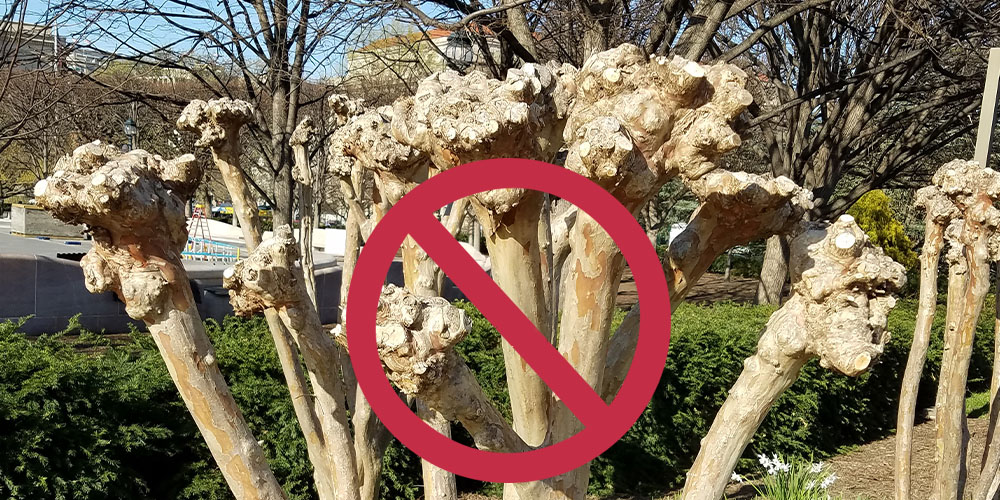 Incorrect Pruning and Care
Incorrect Pruning and Care
One of the most common mistakes in Crape Myrtle care is to take the tops of the branches; this leaves you with knobby, knee-like trunks that sprout a profusion of spindly branches, barely strong enough to support flowers. The look is awkward at best, unsightly at worst, and prevents the tree from assuming its natural shape.
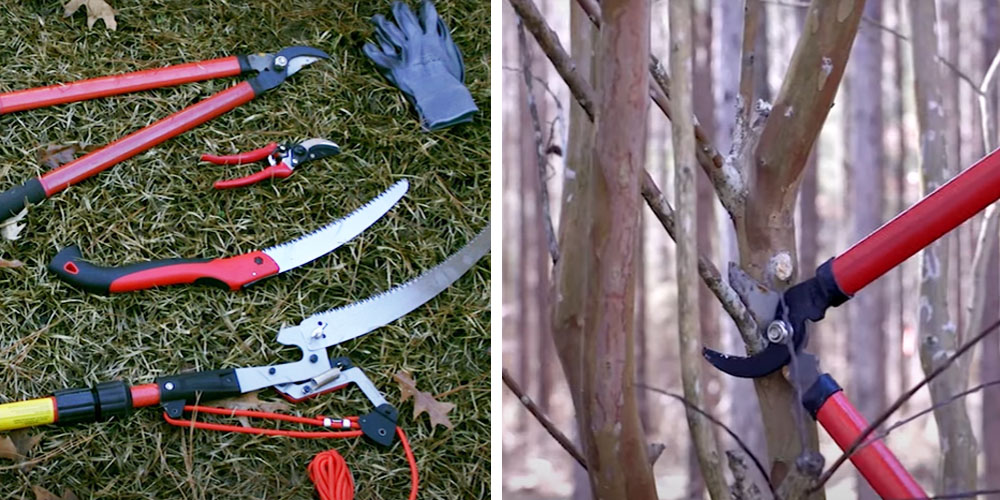 Photo Credit: Mississippi State University Extension Office
Photo Credit: Mississippi State University Extension Office
How to Correctly Prune a Crape Myrtle
With proper pruning, you can shape your Crape Myrtle into its natural vase-like form. If you establish a good structure when it’s young, your Crape Myrtle will require less and less pruning as it matures. The first step is removing any lower limbs, or suckers, thinner than a pencil. Cut them back to the ground using hand-clippers, loppers, or a pruning saw. Ideally, you’ll want to leave 3-5 main trunks to mature over time.
The second step is to thin out branches in the upper part of the tree or shrub. Start by removing diseased limbs and crisscrossed branches that are rubbing on each other. Then thin away other branches, as needed. Less is more when it comes to pruning these plants, and remember to make cuts right at the branch junctions for the cleanest look.
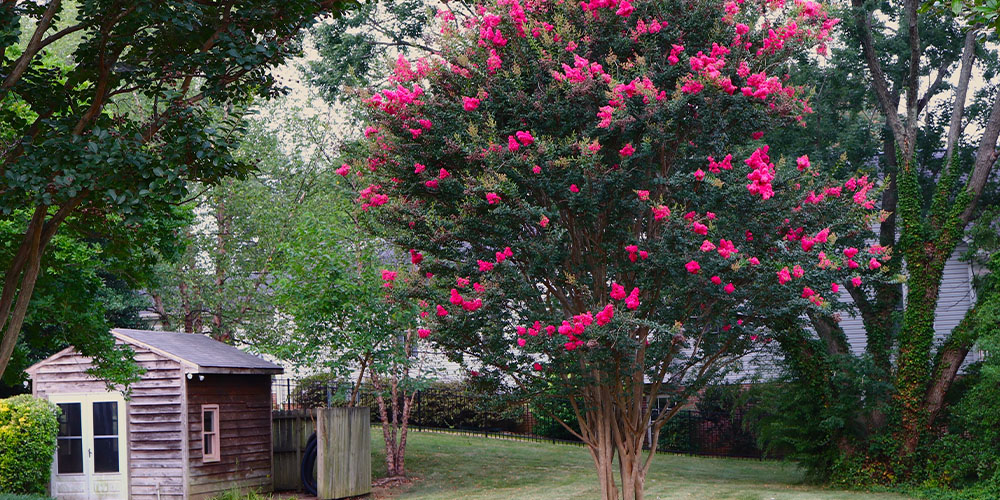 How to Prune Height Off a Crape Myrtle
How to Prune Height Off a Crape Myrtle
Crape Myrtles come in many sizes, from small shrubs to medium-sized trees. The best way to control the height is to choose the variety you want from the beginning and let it grow into its mature size.
If you already have an established plant that you need to control, don’t top it and give it a knobby look. Instead, trim it by taking the uppermost branches back to their nearest junction, not cutting them down to the main branches. This technique reduces the height while keeping the Crape Myrtle in its beautiful, natural form.
Keep in mind that if you choose one of the larger tree varieties, it may be hard to keep it small. It’s best to let it be a tree rather than trying to control its height.
When to Prune a Crape Myrtle
The best time to prune Crape Myrtles is in the late winter before they start to regrow in the spring. Anytime in February is ideal. Since they blossom on new growth every year, there’s no risk of pruning off the blossoms at this time. You can also prune them in the fall once the leaves are off, but an unpruned tree is more attractive during the winter.
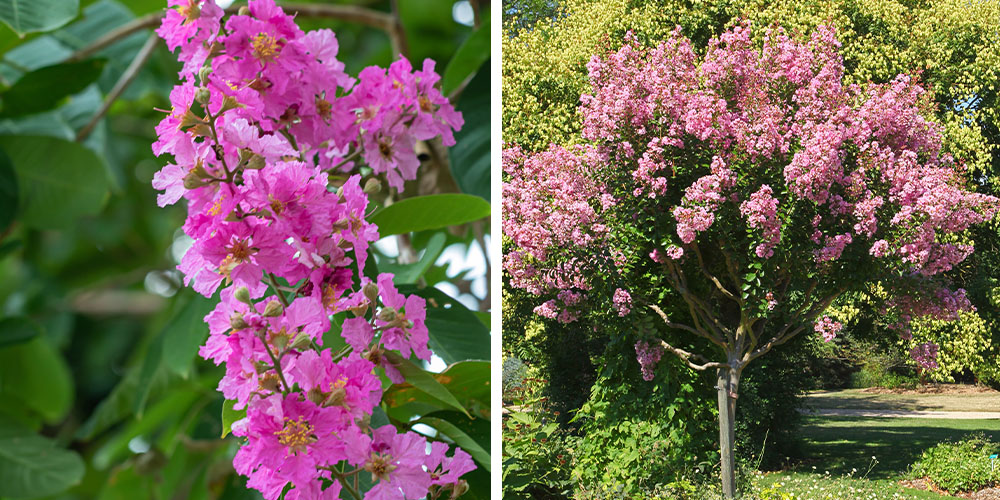 Other Care Tips
Other Care Tips
- Full Sun for Full Blossoms: to enjoy the most abundant blossoms, choose a site with full sun, at least 6 hours per day. The radiant rays will give you radiant blossoms in pink, lavender, white, or red.
- Average Soil: Crape Myrtles are not too picky about soil, but they don’t need soil that’s overly rich in nutrients. Rich soil encourages the growth of foliage rather than the blossoms we desire.
- Water Needs: Crape Myrtles like to have moisture. Watering is necessary, especially during dry spells, but they don’t like soggy conditions or poorly drained sites, as they are susceptible to root rot.
- Preventing Fungus: Although they’re usually pest-free, Crape Myrtles are prone to powdery mildew and other fungal infections. So, when watering, remember to water the roots, not the leaves. Thinning the branches also brings more airflow into the canopy, discouraging fungi.
With the proper care and pruning, your Crape Myrtle will mature into its natural shape, providing an abundance of blossoms and all-year interest.
To see our full selection of trees and shrubs, visit our nursery in Pass Christian, Mississippi!
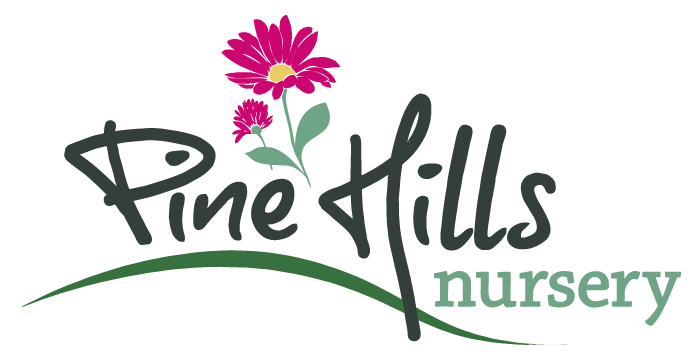
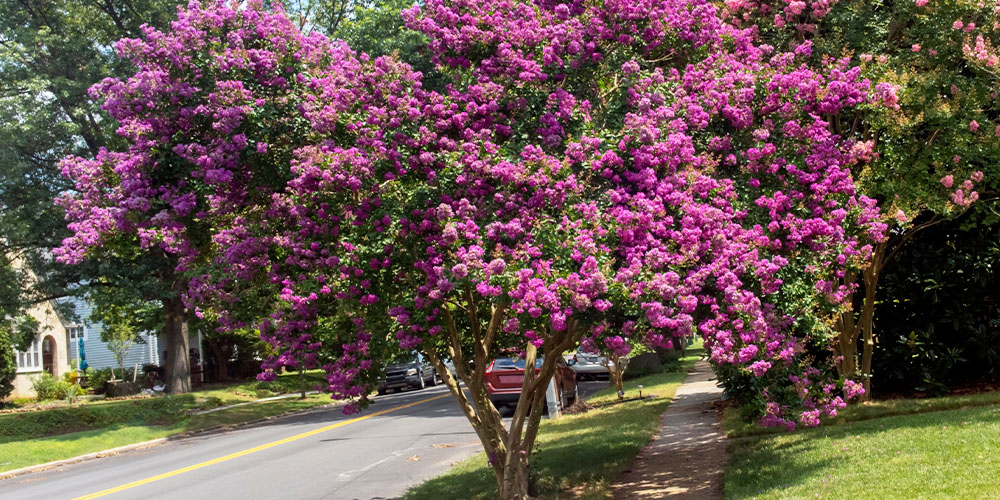


Why won’t they bloom?